Floristic, Structural, and Conservation Analysis of the Habitats Occupied by Dupont’s Lark, Chersophilus duponti, in the Northwest Edge of Its Distributional Range ()
Received 25 May 2016; accepted 7 August 2016; published 10 August 2016

1. Introduction
Among the steppe birds with current population decline are several members of the family Alaudidae [1] . Although the reasons for their demise are varied, the majority of larks are highly sensitive to modifications to their habitats [2] . When designing management measures to protect decreasing bird or other populations, a good knowledge of the habitat requirements of each species is essential.
Larks have been the victims of niche separation caused by ever changing dryland agricultural practices [3] . This has meant that many conservation strategies pursue the preservation of crop edges, which offer both food and protection for birds [2] [4] . However, not all species depend on these sites for nesting and seek out more natural spaces during the breeding season [3] . This also means a need for detailed knowledge of the preferred habitats of each species throughout its life cycle.
One of the species of the family Alaudidae that is most sensitive to perturbations of its habitat is the Dupont’s lark Chersophilus duponti. This passerine bird is among the rarest in the western Paleartic and is today only found in the Iberian Peninsula and North Africa [5] [6] . The species is also among the least well known through- out Europe and many issues related to its behavior, conservation state and habitat selection are still largely unclear [7] .
Several reports have described the distribution of Dupont’s lark in Spain, and most of these have provided numbers of individuals and population distributions [6] [8] [9] . However, few studies have focused on its habitat selection [10] [11] or dispersion patterns [6] .
The largest populations of Dupont’s lark are found in the Iberian High Plateaus, or “parameras” [7] ( Picture 1 ), whose plant communities are exposed to extreme weather conditions typical of the Supramediterranean parameras, including severe winds, prolonged snowfall, low rainfall and intense sunlight, among other adverse factors [12] . Populations may also be locally common in the open shrublands of Mesomediterranean brackish depressions of the Ebro basin and very much scarcer in the coastal thermo-Mediterranean scrubs of the southeastern Iberian Peninsula ( [7] [10] [11] and personal data).
2. Material and Methods
The study area was the northwestern quadrant of Spain spanning the provinces of Zamora and Palencia (Spain). Sampling sites were selected based on the 2007 census perfomed by Suárez and Garza as well as data provided in the census in Zamora 2008 [17] . In the Zamora province, the species occupies the western portion, while in Palencia it appears exclusively in the region of El Cerrato (Figure 1). In both provinces, Dupont’s lark appears
![]()
Picture 1. Dupont’s lark, Chersophilus duponti, in the typical habitat in Iberian High Plateaus, or “parameras” (Guadalajara, Spain).
![]()
Figure 1. Relevés taken in the provinces of Zamora and Palencia (Spain) according to the known distribution of Chersophilus duponti in this zone. Black solid line is Portugal-Spain border. CIS; ERI, CYT, THY-PA are group of different types of vegetation (see text).
in landscapes typical of the Northern Meseta consisting of Supramediterranean scrublands scattered among extensive farmlands, woods and reforested pine forests.
A set of 29 relevés or sampling plots were taken and analyzed according to Braun-Blanquet methods [18] both in zones where the species currently exists according to the most recent census, and in those where it is considered recently extinguished [6] . Edaphic and geologic data were previously obtained from bibliographic and cartographic sources. Elevation (msl), aspect, slope, stoniness (%) and parent rock material were recorded. Relevé plots at each site were selected according to homogeneity of physical features, vegetation structure and species dominance. Plot size was based on the concept of the minimum area of relatively uniform stands [19] . Cover was estimated for perennial vascular plants according to the ordinal scale of Braun-Blanquet (1979) as modified by [20] r (rare species), + (cover < 1%), 1 (cover 1 to 20%), 2a (cover 20 to 30%), 2b (cover 30 to 40%), 3 (cover 40 to 60%), 4 (cover 60 to 80%) and 5 (cover 80 to 100%).
A total of 81 vascular taxa was recorded. Using several regional floras, plants were identified as far as possible in the field and specimens of dubious identification collected for subsequent laboratory determination. Plant nomenclature usually follows Flora Ibérica [21] and phytosociological nomenclature follows Peinado [22] . Plant associations and alliances were identified by comparison with studies of the area and number of habitat were identified with the Interpetation Manual of European Union Habitats (2013) and [23] [24] .
For the numerical analysis, Braun-Blanquet cover values were ordinally transformed: + was replaced by 1, 1 by 2, 2 (a, b) by 4, 3 by 6, 4 by 7 and 5 by 8. Analyses were performed using SPSS v22.0 software (IBM, Somers, NY, US) starting with a data set (29 relevés) that included each plant recorded in the relevés (81), along with its respective transformed cover value.
Numerical classification of the relevés was based on squared Euclidean distances calculated by an Average Linkage Clustering method of similarity (ALC). This is one of the most frequently used methods in vegetation similarity analysis, in which the process of fusion is based on the minimum average distance between individuals and groups. The benefits of ALC over single or complete linkage clustering have been summarized by reference.
In order to relate estimated lark density and floristic composition, a dimensionality reduction with floristic and cover data of releves on the basis of principal component analysis (PCA) was perfomed. This summarizes the complexity of floristic data. Density is calculated with data of potential habitat and estimated territories in each location with 2009 census. After with principal components and estimated density we performed a multiple linear regressión. This method is used in some studies with these types of data [25] - [27] with robust results.
3. Results
The cluster diagram obtained from the relevés (Figure 2) delimits four groups. Statistical data and the floristic set in each group are provided in Table 1.
Group ERI includes silicicolous heaths co-dominated by Erica species: Erica aragonensis, E. scoparia, E. umbellata, Genistella tridentata and Halimium ocymoides, whose relevés were recorded in the northernmost part of the world distribution range of Dupont’s lark.
Group CIS gathers scrubs dominated by Cistus ladanifer, whose typical companion species are Lavandula pedunculata and Quercus rotundifolia sprouts. These scrubs correspond to Upper Mesomediterranean and silicicolous “jarales” (“jara” is the Spanish name for Cistus species), which are typically dense and show scarce floristic diversity.
Group CYT comprises acid bushlands (“piornales”) dominated by brooms (Leguminosae scrub, nano- and micro-phanerophytes with long flexible, slender green stems and branches, mainly of the genera Genista and Cytisus), with Lavandula pedunculata and Thymus mastichina as the most frequent companions.
Group THY-PA consists of basophilous low scrubs flourishing in El Cerrato (Palencia). Of the four groups, these scrubs show the greatest floristic diversity. Most common species were Helianthemum hirtum, Helichrysum stoechas, Thymus zygis, Genista scorpius and grasses such as Festuca hystrix or Stipa iberica.
![]()
Figure 2. Cluster dendrogram of the 29 relevés taken in the study area. To details see text.
![]()
Table 1. Frequency and cover percentages recorded in the relevé groups. Only most representative plant species (appearing at frequency ≥33%) and interesting bioindicators are included.
With data of cover and floristic presence we performed a PCA. The results showed that the four first of principal components explain the 67.91% of the floristic and coverage variance in the 29 releves (Figure 3).
After, we calculated estimated density in all locations, with data of 2009 census and habitat potencial estimation [6] . We obtained that density of larks in the area are from 0.02 territories by hectare to 0.25 territories by hectare, with CYT group much more dense that the rest of groups.
We did not find a direct relation between density and vegetation cover clases, altitude, total cover of species neither stoniess area. We performed a multiple regressión and ANOVA analysis between data of density by relevés (standardized) and the three first PCA components. We obtained that there is a very significance relation between components obtained from floristic composition and coverage, and the density of larks in the relevés (Figure 3, Table 2).
4. Discussion
With the exception of the low scrubs of El Cerrato (THY-PA), the shrublands examined in our study had little in common in florist terms with those described throughout the known distribution range of Dupont’s lark ( Picture 1 ) [6] .
The El Cerrato (group THY-PA) scrubs , in calcic soils, show a similar structure to that observed in the Iberian System, Spain ( [6] ; and personal observations). These very open scrubs, usually appear as isolated patches of native habitat with dwarf woody plants (average vegetation height c. 25 cm) belonging to the Supramediterranean alliance Siderito incanae-Salvion lavandulifoliae (Table 3). Their communities usually constitute secondary communities arising from the destruction of the natural potential vegetation of juniper woodlands (Juniperetum hemisphaerico-thuriferae, habitat type 856111) or mixed evergreen forests (Junipero thuriferae- Quercetum rotundifoliae, 834033) due to fires, grazing or agricultural use and subsequent erosion of the upper soil layer [23] .
However, of the two areas occupied by Dupont’s lark in El Cerrato (Palencia), one was recently extinguished and the other was very disturbed with scarce patches of natural vegetation and subjected to disparate land uses such as farming, landfills, quarries, etc. If this trend of anthropogenic degradation continues, the survival of these last populations in this area is unlikely. This area, which could be an important link between the populations of
![]()
![]()
![]()
Table 2. Multiple regressión, model summary, and ANOVA analysis between data of lark’s density by relevés (standardized) and the three first PCA components.
a. Dependent variable: Density100ha Variables: (K), comp1, comp2, comp3.
![]()
![]()
Figure 3. Above: PCA analysis of relevés, showing the 3 first factors. ERI, CYT, CIT and THY- PA show the group of the relevés (read text). Down: relation between transformed density and first component of PCA.
western and eastern areas, but it is in a very bad condition ( Picture 2 , Figure 1).
The heathlands (group ERI), shrubs of Cistus ladanifer (group CIS) and piornales (CYT) of northwest area differ widely from those described as typical of the species. All are acid soil vegetation communities, a real peculiarity worldwide for Dupont’s lark. Heathlands (ERI) of the phytosociological class Calluno-Ulicetea are
![]()
Table 3. Summary with assotiation and bioclimatic features of habitat occupied by Dupont’s lark in the study area.
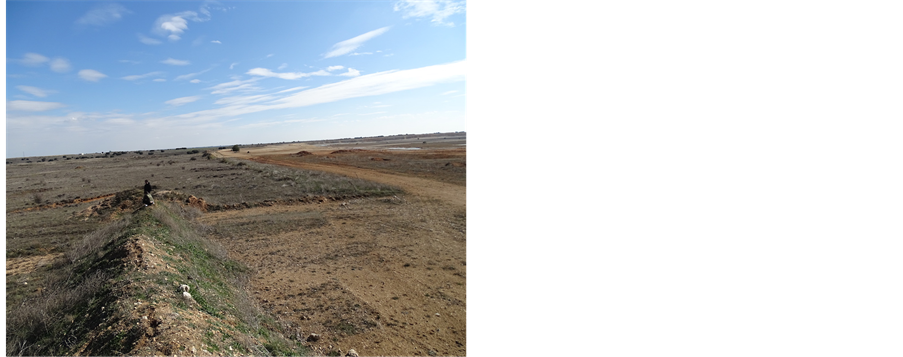
Picture 2. Large disturbance in the last habitat of Dupont’s lark in El Cerrato (Palencia, Spain).
serial dwarf shrub communities of deciduous or marcescent natural potential forests (Querco-Fagetea) degraded by fires, grazing or wood-cutting. Although floristic composition within this group is similar, we can observe two different serial situations: one group dominated by Erica aragonensis ( Picture 3 ) showing over 50% cover)reaching a height of 80 cm, and another with smaller proportions of Erica aragonensis Genistello tridentatae- Ericetum aragonensis, 303027 and abundance of Erica umbellata showing an average height of 37 cm. This last group known as microheather, or nanobrezal in Spanish, is the typical association of Sierra de la Culebra, Halimio ocymoidis-Ericetum umbellatum, 3032D [29] [30] , which replaces Quercus pyrenaica forests after fires or intense grazing. Although this last group shares no species with other communities of the lark’s usual habitat, we found a similar structure to some communities of Thymus in the Iberian system and Ebro Valley. The presence of the Dupont’s lark in these heathland communities is linked to most open areas.
Natural succession in heathlands is slow and usually interrupted by fires and/or grazing. Reforesting with Pinus pinaster is a threat for larks and could affect the sparse areas that they inhabit in northern Zamora. Fire could act in favor of the clearing and in the interruption of the succession process effects, although it could also directly affect their much reduced populations.
In continental areas, with less rainfall, heathers are replaced with jarales belonging to the class Cisto-Lavan- duletea and association Lavandulo-Genistetum hystricis, 303069 (Table 3). These jarales usually replace sclerophyllous forests (Quercetea ilicis) cleared by fire or for wood production suffering subsequent erosion of upper soil layers [30] . These communities are dominated by Cistus ladanifer, with few species more, less than 5 species per relevé, mainly Lavandula stoechas. The dense composition of these communities makes it a real mystery that larks have made them their home. Clearing of vegetation exist between the scrub and the bird has been sometimes spotted along tracks that cross the area ( Picture 4 , personal observation).
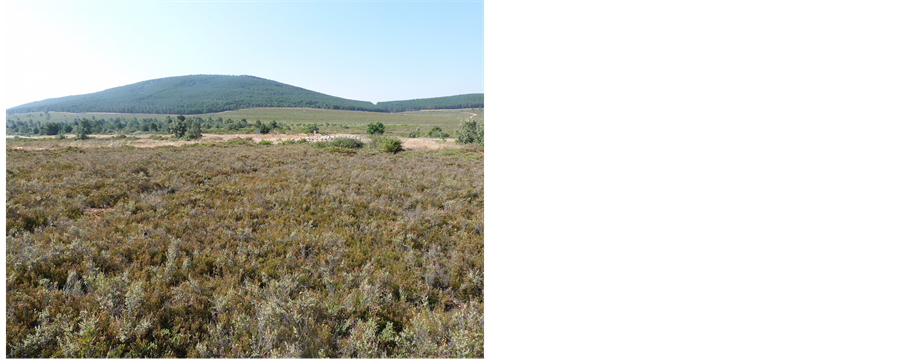
Picture 3. Heathers inhabits by Dupont’s lark in Sierra de la Culebra (Spain). In the background reforested Pinus pinaster woods, a large threath for the species in these areas.
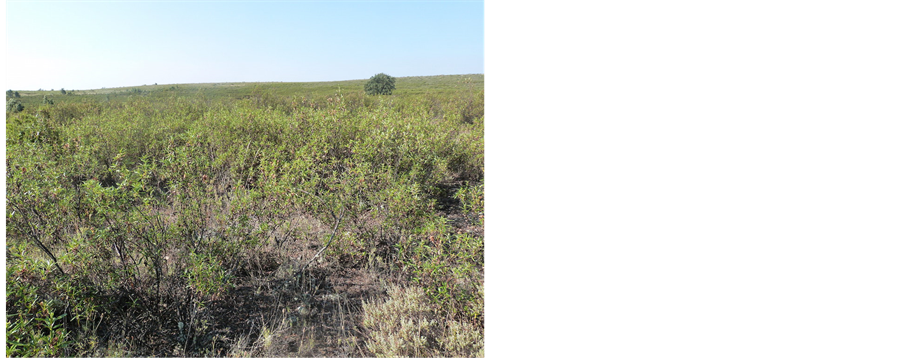
Picture 4. Cistus ladanifer communities inhabits by Dupont’s lark in Zamora (Spain).
Thus, it could be that these small areas are sufficient for the survival of the species. The potential area of the Dupont’s lark in these communities is small because flat areas are scarce, and many of such zones have been given over to farming or reforestation with pines (Pinus pinaster,)
Lastly, the CYT group corresponds to brushlands of the class Cytisetea scopario striatae flourishing on humic, non eroded soils as the secondary vegetation of sclerophyllous or deciduous climactic forests [23] .
In these communities, larks are mainly seen to inhabit patches of Thymus mastichina and Lavandula pedunculata on sandy soils among Cytisus scoparius or Cytisus multiflorus brushlands (Table 3). These habitats belong to the association Genisto hystricis-Cytisetum multiflori, 309027, or mainly to Genisto floridae-Cytisetum scoparii, 309023. These patches show a diverse composition, averaging 19 species per relevé, resulting in a vegetation mosaic between the dense brushlands and more open areas. Usually patches are grazing lands or lands affected by fires ( Picture 5 ), which reduces the density of communities interrupting the natural succession process. We observed these communities in the Arribes del Duero area ( Picture 5 , Picture 6 ) in a landscape mosaic composed of farmlands, dense woods and brushlands with gently sloping areas where the lark inhabits these communities. Despite the effects of fire and grazing, it is easy to note the presence of Quercus pyrenaica and Quercus ilex as colonizers of the natural succession. This could be a threat for the small patches inhabited by the lark. Once again we found reforested flat zones, a threat seen throughout all of Zamora.
Given the highly specific nature of their habitats across their distribution range, it could be that the larks of
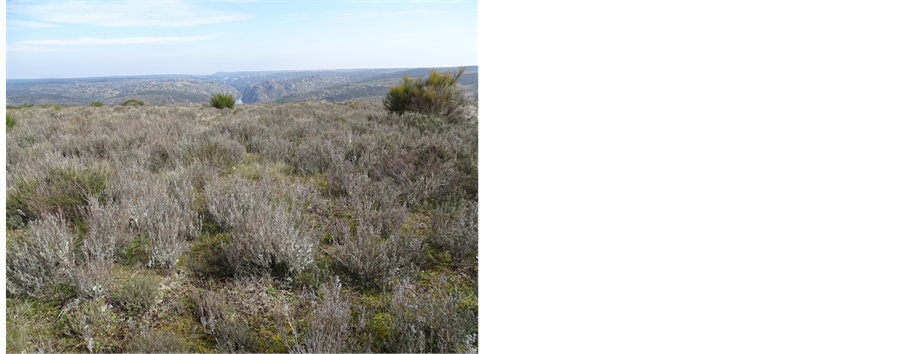
Picture 5. Thymus mastichina and Lavandula stoechas community with lark presence in the Arribes del Duero (Zamora, Spain).
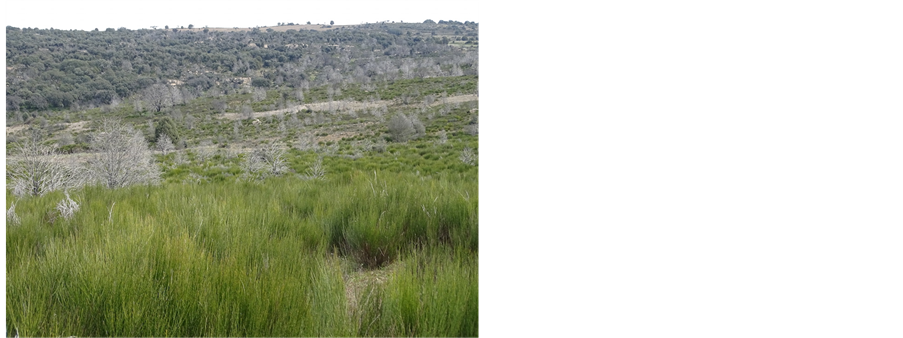
Picture 6. Patches affected by fires can stop the natural sucession and made more open areas, better habitat for Dupont’s Lark. Fire affected area with lark presence in Arribes del Duero (Zamora, Spain).
Zamora are a relict population isolated from the rest, at least in terms of the peculiar habitat features. However, if we consider that the species has proven its capacity to recover following the destruction of its habitat [31] , it also seems plausible that these populations were displaced towards these habitats as a consequence of marked disturbances such as fires, felling or clearing ( Picture 6 ). Data suggest that the species may colonize disturbed areas in a dynamic movement between succession and disturbance. Recent recolonized data, like the colonization in 2015 of the Lleida location far away of the known lark locations (II Workshop of alondra ricotí, 2016) [32] , and recent studies of connectivity [31] , may indicate that lark spread faster than thought. Heathlands, jarales and piornales are succession plant formations such that these Dupont’s lark populations are subject to episodes of extinction-colonization due to habitat loss through intense perturbation. This could indeed explain the commonly fluctuating numbers of these populations [33] .
According to the source-sink theoretical model [34] , the three deviant habitats observed prompt two hypotheses: they could be either source habitats in which Dupont’s lark normally lives, in which case the species was not detected in other areas of similar ecological characteristics, or they could be sink habitats. If we consider that regions showing an appreciable area occupied by this lark species are found much further apart than the bird’s theoretical dispersion capacity, accepting the second hypothesis sparks another question concerning the provenance of specimens that occupy such sinks. It seems that larks in this area are adapted to the episodes of extinction-colonization. It looks not likely that they could come from other populations.
The relation found between composition-cover of relevees and the lark’s density can relate density to the composition and coverage of plant species. This may indicate a path for habitat restoration measures that may apply to this species, especially in many extreme distribution areas where their population status is really worrying.
We also observe here that the areas sampled are subject to different types of threats, the most significant being the natural succession process due to the cessation of grazing, reforestation measures with Pinus pinaster and the use of flat areas for farmlands or other uses. Larks in Zamora inhabit areas in the last stages of succession of shrubs. In fact the scrubs inhabits for lark in this area are not included in the list of priority habitats of the Council Directive 92/43/EEC on the conservation of natural habitats and of wild fauna and flora, and therefore they are not protected by UE legislation (Table 3). These zones are usually small patches surrounded by more dense vegetation. Given similar habitats of acid soils exist throughout the Iberian Peninsula, the question arises as to why larks have selected these habitats of Zamora and not another similar areas. Though the issue remains unclear, the present data point to the important role played by the Dupont’s lark populations of Zamora within the wider world population context and the need to further our understanding of the ecology of a species in decline whose management and conservation actions have yet to be started.
Acknowledgements
Thank to three anonymous reviewers who helped improve and clarify the paper.